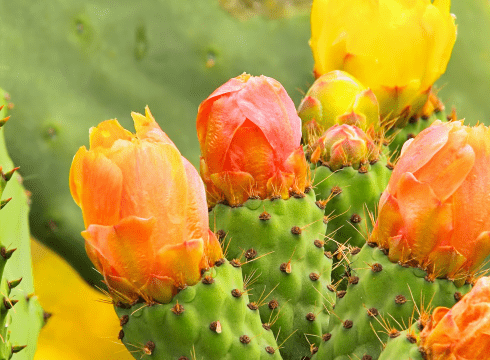
Opuntia Polyacantha
Zones: 3a - 9b
Sun
Average, Well-Drained, Rocky, Gritty
Spring
Low, Occasional
Outdoors
Seed, Cuttings
Considered non-toxic
ALso Known AS
Plains Prickly Pear, Hair-spine Cactus, Hairy Prickly Pear, Panhandle Prickly Pear, Starvation Prickly Pear, El Paso Prickly Pear, Grizzly-bear Prickly Pear, Navajo Bridge Prickly Pear
Origin
North America
leaf shape
Flat, rounded pads known as cladodes, covered with small spines and barbed bristles (glochids).
difficulty
Great for Beginners
Opuntia Polyacantha, commonly known as the Prickly Pear Cactus, is a marvel of adaptation and resilience. This cactus is distinguished by its unique pad-like segments, known as cladodes, which are thick, fleshy, and typically covered with clusters of sharp spines and tiny, hair-like barbs called glochids. These pads, which are green to blue-green in color, serve multiple purposes – acting as both the stem and the leaves of the plant, they are vital for photosynthesis and water storage. As a member of the Opuntia genus, it shares the characteristic segmented growth pattern, with new pads emerging from the edges of older ones, creating a sprawling, sometimes almost bush-like appearance.
The beauty of Opuntia Polyacantha extends beyond its intriguing form; in late spring to early summer, it produces vibrant flowers that bloom from the edges of the pads. These flowers, often yellow, pink, or red, are large and showy, providing a striking contrast against the green pads. Following the flowering, the plant may produce edible fruits, which are also known as tunas. It has a long history of use by indigenous peoples of North America for both food and medicinal purposes. Its ability to thrive in harsh environments, combined with its striking appearance and ecological significance, makes it a compelling subject for any succulent enthusiast or gardener looking to add a touch of desert beauty to their surroundings.
Opuntia Polyacantha’s growth habit makes it a standout in any succulent collection or drought-tolerant landscape. It can form dense clumps that spread outwards, giving it a robust and hardy presence. In its natural habitat, this growth pattern helps the plant to dominate the landscape, contributing to its role as an important species in desert ecosystems.
Water Needs
Tends to prefer well-drained soil. Will grow in containers, rock gardens and in desert like conditions. Opuntia Polyacantha would be perfect to use in xeriscaping as it is drought tolerant.
TEMPERATURE / Hardiness
Zones: 3a - 9b
Opuntia Polyacantha generally prefers hot temperatures, but will tolerate a wide range of temperatures.
Light
Younger Optunia do well in bright sunlight. Mature planter prefer full sun. Growing Opuntia Polyacantha indoors requires as much direct sunlight as possible, west or south facing windows tend to do best.
dormancy
Opuntia Polyacantha enters a period of dormancy during the winter months. The plant requires less water, and its growth slows down significantly.
Size
Opuntia Polyacantha can vary in size, but typically grows to about 1 to 2 feet tall and can spread several feet wide. The size largely depends on its growing conditions and age.
Toxicity
The glochids (barbed hair clusters) can cause a severe skin irritation upon contact.
flowers
SpringVibrant yellow, pink, or red flowers that bloom from the edges of the pads.
Soil
Opuntia Polyacantha prefers well-draining soil, ideally a sandy or gravelly mix that mimics its natural desert habitat.
Feeding
Fertilization should be done sparingly; a balanced cactus fertilizer can be used once in the spring at the beginning of its growing season. Over-fertilization can lead to weak growth and increase the risk of pests and diseases.
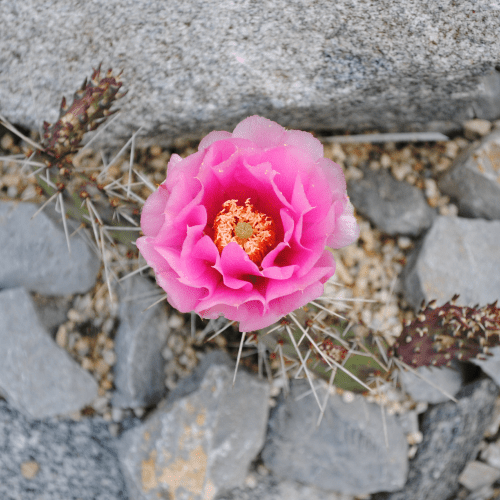
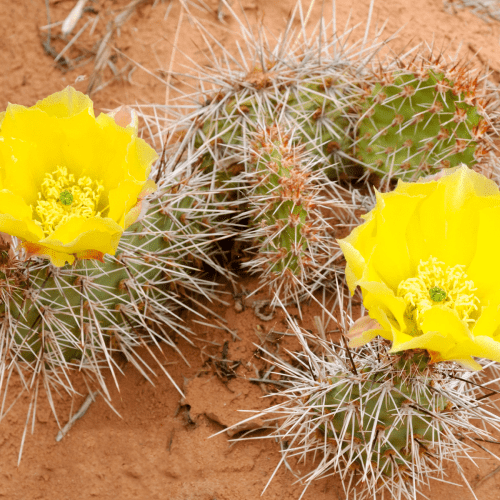
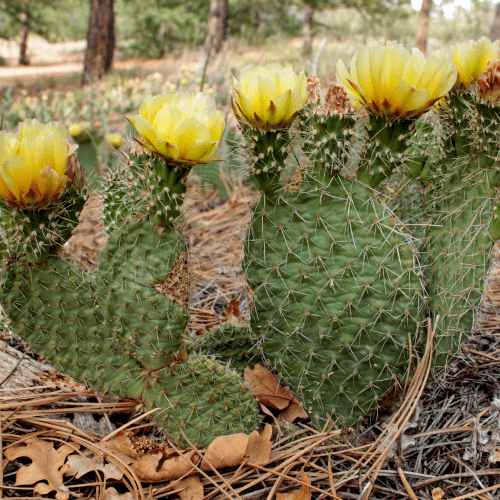
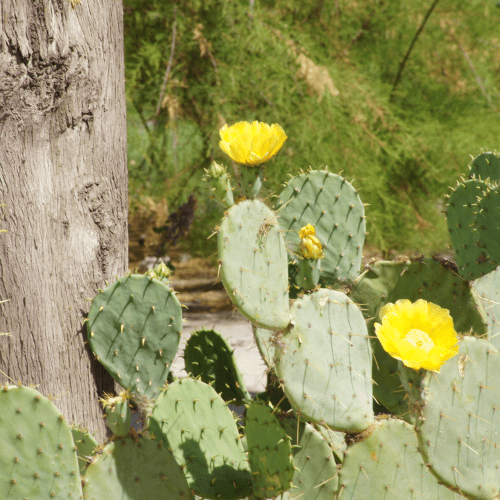
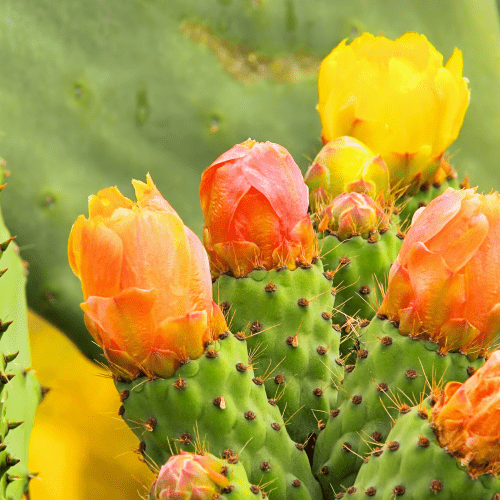
how do you propagate Opuntia Polyacantha?
propagated from:
SeedCuttingsThe pads will root to form new plants. Although, they can become invasive in some regions, so keep that in mind before propagating and planting. To propagate, use a clean cutting tool to cut at the joint. Let the cutting callous for 2 to 3 days. Once calloused, the cutting can be placed in a container or directly in the soil to root. Cuttings will usually root in 2 to 6 weeks.
FAQ
Frequently asked questions about Opuntia Polyacantha
No FAQs available.
Similar Topics in: Cactaceae, Opuntia, Opuntioideae